The Gadget Show Live, April 2013: Technology in the UK
by Ian Cutress on April 4, 2013 6:30 AM EST- Posted in
- Trade Shows
- UK
- Gadget Show
Cambridge University Eco Racing: Solar Challenge 2013
For those unfamiliar with the Solar Challenge, it is a 3000 mile biennial ‘race’ across the Australian desert with two main goals – fuel efficiency and speed. By using as little initial energy as possible, the Solar Challenge pits energy efficient vehicles against each other to see how fast they can transverse this epic course. One such team is from Cambridge University, present at the Gadget Show Live in order to promote not only themselves but also the event, to investors and the media.
Clearly with the race being in Australia and in the desert, all teams use solar panels. The current CUER design has competed in the past two challenges, and all the entrants have looked very similar – the race in 2013 has had a significant set of rule changes (such as 4 wheels rather than 3), and as such new vehicles have to be designed. All vehicles in the race must have a driver rather than an automated GPS system, and by using student power (which comes very cheap!), the CUER team explained the technology behind their vehicle for the upcoming event.
I have some knowledge of solar cells, as it was a close cousin of my general academic area at university. At the time of those lectures, solar cells were being touted at around 20-25% efficiency; currently the ones being used by CUER are up to 35.5%, which is astonishing for only a few years research. These are expensive, made with space-grade Gallium Arsenide, and might not be the lightest available, but they sure are efficient. In order to save weight elsewhere, we have a carbon fiber monocoque weighing only 30 kilograms but measuring 4.5m x 0.8m.
With the heat in the outback, you obviously need to cool both the components and the driver. The team use 14cm Noctua NF-A14 FLX fans underneath the solar panels, as they provide the best CFM for the lowest power - ~30 CFM for 0.8 W. The solar panels in the new design tilt themselves with the direction of the sun depending on the direction the vehicle is pointing and the time of day; luckily the challenge is typically very dry with low humidity, but on public roads so there is the challenge of a cattle grid or two. CUER is aiming for a vehicle that will hit a top speed of 140 km/h, weight under 120 kg, and complete the course in less than 30 hours.
Website link: http://www.cuer.co.uk
Swarm Robotics: Developing Pack Behavior
The field of Robotics is undoubtedly large and ever expanding. Much of the news we see is about human-like robots and interactions, and how these devices fit into our modern world such that the real life won’t jump back in horror. The other end of the scale is miniaturization, and understanding how a large number of elements in a system (ants in a nest, bees in a hive) can co-operate together to achieve a bigger task or decide what to do as part of a group. Things like finding the best trail to a sugar source and telling everyone else, or bunching together to build a new version of yourself are part of this field, and the Sheffield University group of Dr Roderich Groß was at Gadget Show Live, after being showcased on The Gadget Show media network.
Clearly little robots are interesting, and getting them to decide as a group the best way from A to B, without any interaction, is all about detecting local environment. The first port of call would be computer simulation, but nothing gets the creative juices flowing like a hands-on demonstration. Using e-Pucks and Kilobots, the robots talk to each other via infra red using sensors to determine their local environment and perform the task. Each robot has a localized memory (the smaller the robot, the smaller the memory – in the case of the Kilobots, 32-64 kilobytes), which stores basic commands and an element of ‘swarm memory’. They can be globally controlled for simple commands via infra-red, either by a sensor array (Kilobots) or a programmed remote control (e-Pucks).
The research team are helping program the robots to perform swarm and global activities that have worked well in simulation – special aggregation and segregation into strata (combining then organizing into layers, much like shaking a bowl of nuts the brazils always rise to the top), cooperative transport, and self assembly. Ultimately the goal is replication, such that when being provided with the modular building blocks whether as a swarm the robots will be able to recreate new copies or even modified copies based on the needs of the collective. It works in simulation, but experiment is a different matter entirely.
Once this works on the ‘large’ scale (the kilobots are roughly the diameter of a quarter), the aim is miniaturization. Obviously that has many hurdles in itself, in terms of power, response, memory and application. One application demonstrated is of bringing ‘food’ from a source to a nest; now a marketable goal would be if automated robots could divide and conquer the detection and removal of weeds from a field in agriculture, or help in medical research.
With the collective research funding from national and European sources continually diminishing, researchers and research groups are often looking at other sources of funding for industry – the main barrier to this is working towards a marketable product which may not be readily apparent at the start. The latest research grant awarded to Dr Groß’s research group is one from of the national bodies, to expand on the idea of self assembly. The problem is that this field has many more ideas than there are people and money to go around – so almost any source of funding is welcome.
Incidentally, if any undergraduates or postgraduates are interested in this field and pursuing academia, there are a number of positions available on the research website.


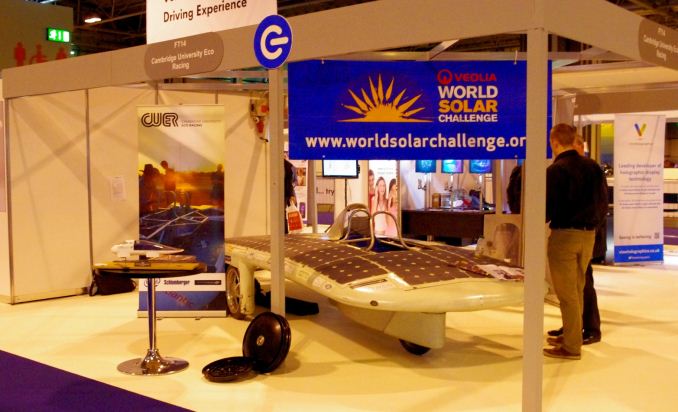
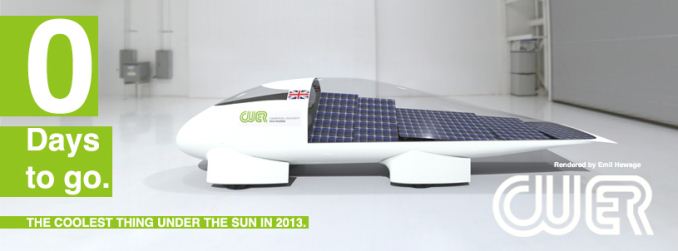
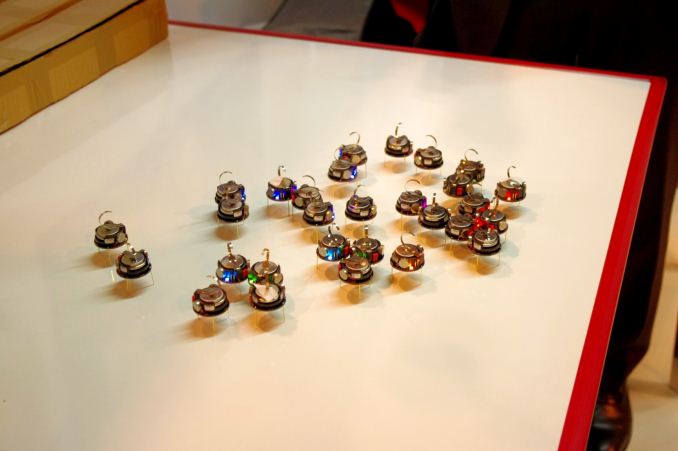
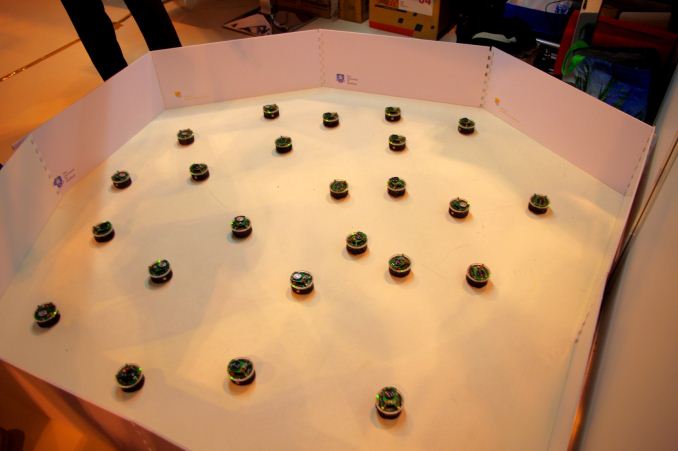
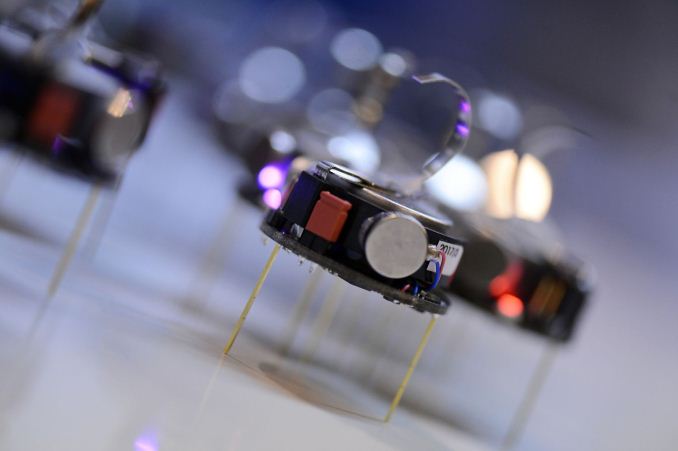








24 Comments
View All Comments
MarkSear - Thursday, April 4, 2013 - link
I'm from the UK - moved to Toronto in Canada a year a go almost to the day. I love the Gadget Show and still watch it through 5 OnDemand (UK TV Channel) over a VPN connection.Seriously though - please correct the facts about the UK?
Movies are available to buy on Blu-ray / download / rent on demand 3 months after release. Often movies are released in theatres before the US and Canada.
As for product releases being delayed in the UK - erm BlackBerry Z10, Samsung S3 / S4, a whole plethora of motor vehicles, TV shows etc...
20 % VAT on goods - yes, but you're not a UK resident I presume - so you're exempt.
As for complex stuff - the EU is a single market - you even have the advantage often of buying good in Euro's - fair's fair now - there's a good chap!
Tams80 - Thursday, April 4, 2013 - link
True, but you can't really complain about the TV shows. The ones your referring to will be British made/commissioned ones and therefore unsurprisingly will be released in the UK first. Although it has got better, we do still have to wait for US TV shows to cross the imaginary Internet ocean (of course the same applies for out TV shows). Don't get me started on anime though!We also don't get some technology products at all and they are often more expensive even when you take in to account VAT.
Death666Angel - Thursday, April 4, 2013 - link
"yes, but you're not a UK resident I presume - so you're exempt."Dr. Ian Cutress is very much a resident of the UK. Unless I've been misled by the podcasts and his reviews all this time. :)
IanCutress - Friday, April 5, 2013 - link
Dear Mark,I am very much British and live in London, having lived in the north, south, east and west of this green and pleasant land.
There has been in the past delays of certain titles and products from NA to the UK/EU - for example a big film like Charlie and The Chocolate Factory (2005) was released 10-Jul-05 in the US and 29-Jul-05 in the UK. This is more common than you may realise, and up to 3-6 months does occur.
Yes, you can go buy in Euros, on the basis that you have to pay to change GBP to EUR (commission or bad rates), then extra for company X to ship it to you, then import tax (20%) to get it across the border. So unless it is 25%+ cheaper in continental Europe, you are still paying through the nose. They closed the loophole regarding Jersey and Guernsey recently, so even 'importing' from there is now subject to import tax.
I know my country, I was blooming born and raised here mate! :)
Ian
Kristian Vättö - Friday, April 5, 2013 - link
You don't have to pay the import tax if you're buying from another EU-country.smilingcrow - Saturday, April 6, 2013 - link
Exactly, no import duty or VAT.Import tax varies depending on the category so is not a fixed 20%.
poohbear - Thursday, April 4, 2013 - link
lol how in the hell is that igloo house a gadget????poohbear - Thursday, April 4, 2013 - link
its like going to a car show and seeing trucks and planes! who comes up with this stuff?evonitzer - Thursday, April 4, 2013 - link
How many products at CES could be called 'consumer electronics'? It really doesn't matter since the show is about displaying interesting things whether or not they are actually feasible for the general consumer.I can't believe people are griping about the igloo! That looks fantastic and I want it for my home.
nerd1 - Thursday, April 4, 2013 - link
Nao humanoid robots are made by a french company :-)